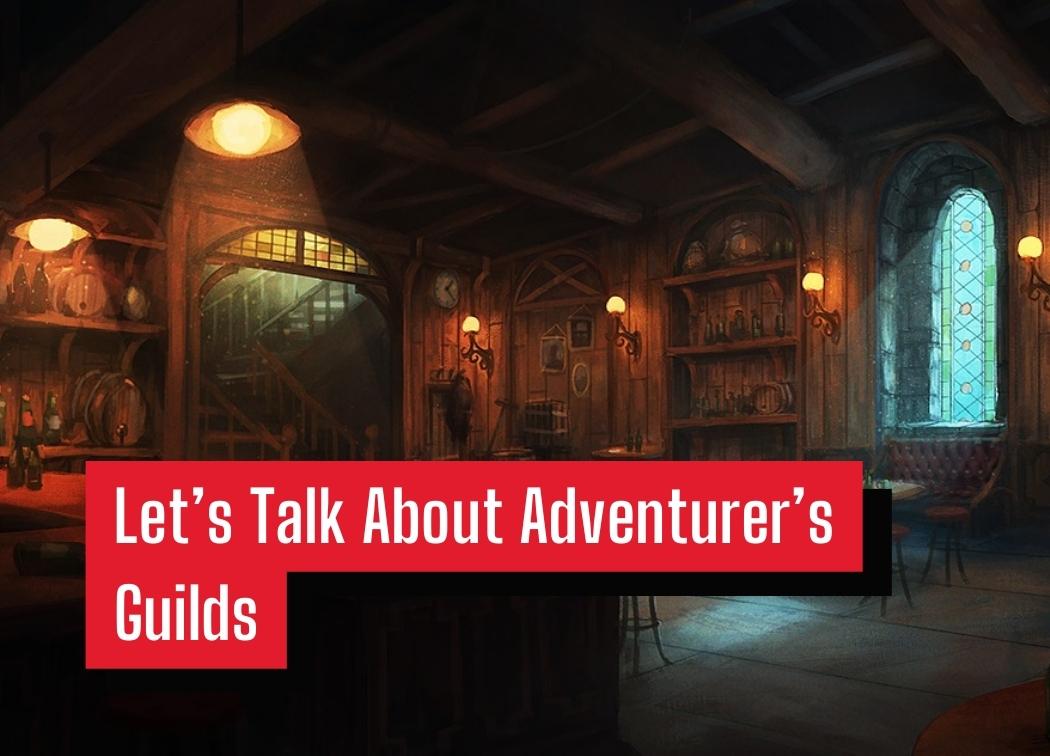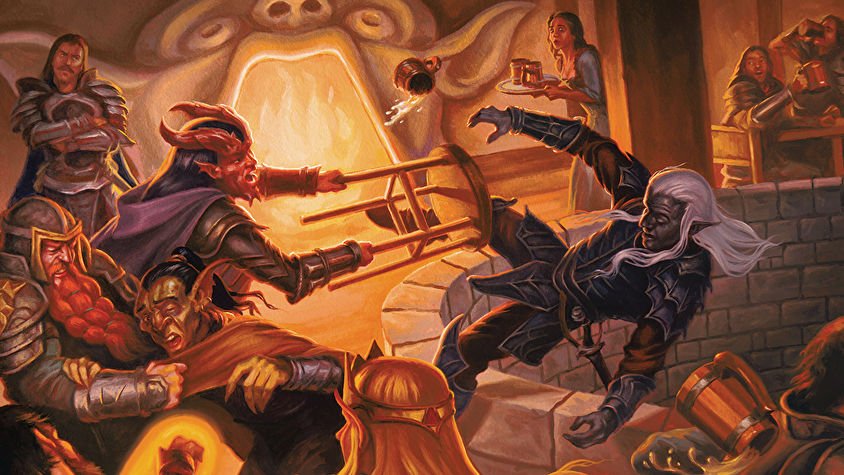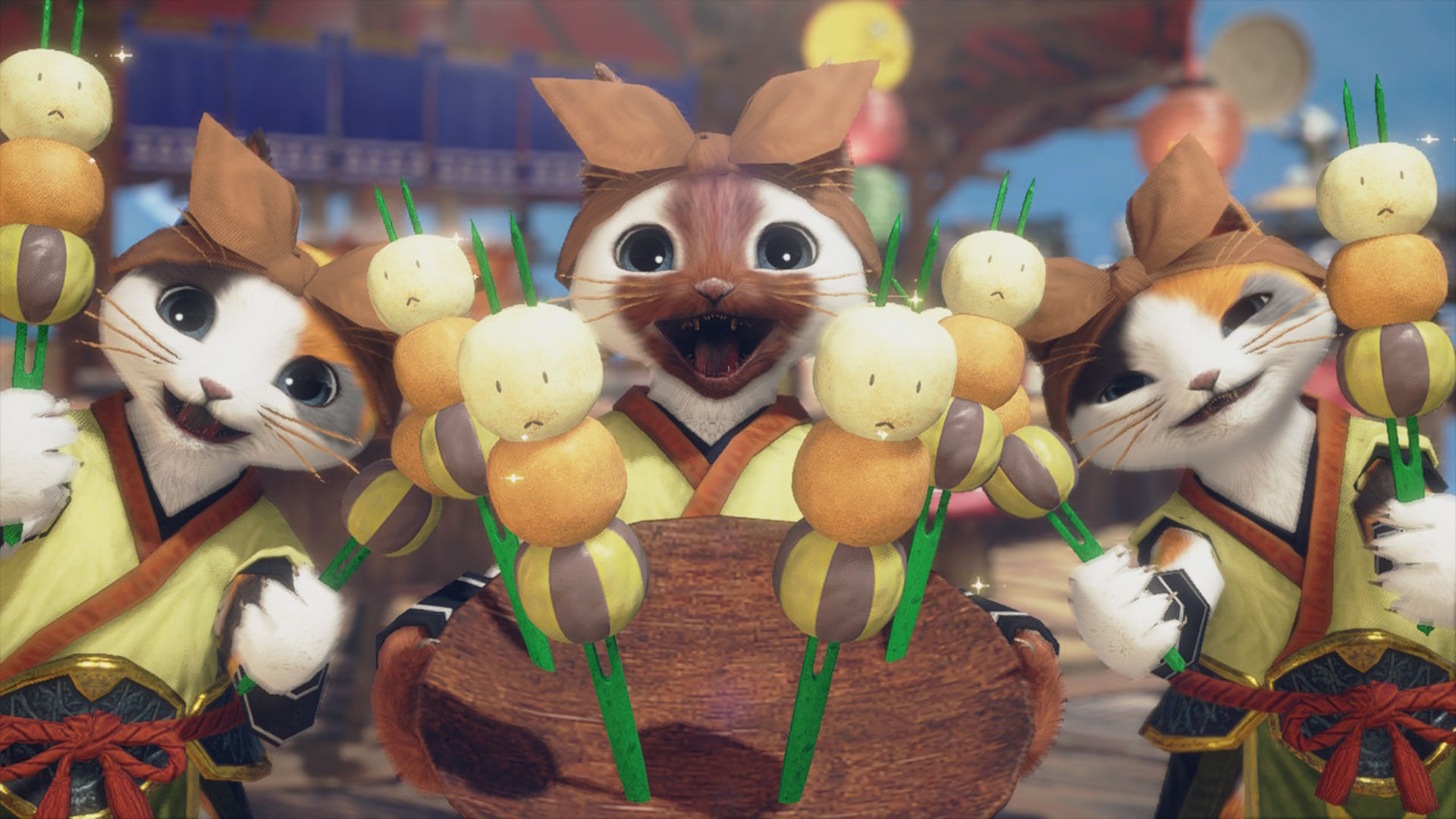Let’s Talk About Adventurer’s Guilds

My Curse of Strahd campaign is winding down and while I’m enjoying wrapping it up and bringing Strahd’s plans and preparations to fruition… I’m already brainstorming my next campaign.
Real-life has become super busy and while I still have plenty of time for gaming I’m finding myself with more and more responsibilities where that may change in a few years. That’s why I want this next campaign to be a big, homebrewed one like my previous campaign.
Something I’ve always wanted to try is running an adventurer’s guild-style D&D campaign. Perhaps now is the time or my Monster Hunter: Rise obsession has made my mind drift back toward this theme, but either way, I’m pitching this premise to my group once we’re done in Barovia.
It’s time to do something bold, big, and completely ridiculous. Creating a 5e adventurer’s guild set of rules fits the bill.
So with that in mind, let’s put pen to paper and brainstorm my vision for an adventurer’s guild.

What is an Adventurer’s Guild?
An adventurer’s guild serves as both a hierarchy/structure for adventurers as well as a home base and meeting spot for them.
A guild is run by a guild master. In most fictional works this tends to be a retired adventurer who’s made a name for themselves, but they’re ready to hang up their sword and train the next generation of starry-eyed heroes.
Although, that’s not to say that someone who is business-savvy or has a penchant for leadership couldn’t form their guild and source adventurers to work under them.
Adventurers who join are generally categorized by rank by the guild. The more experienced and powerful they get, the higher their rank becomes. The higher the rank, the more privileges they get. This could be in the form of use of the guild’s facilities, access to lucrative jobs, or gain access to high-profile connections due to the guild’s prestige.
Guilds have tons of cool facilities and perks for their members to partake in. It’s one of the primary reasons a lot of adventurers will join up with a guild. Well-stocked libraries, state-of-the-art workshops, and other such facilities are open to members to use.
The primary goal of an adventurer’s guild is that it gives adventurers access to opportunities they couldn’t afford by themselves. Ergo, they can attract new blood as well as seasoned veterans looking for more structure.
Lucrative Contracts and Jobs
While adventurer’s guilds provide for their members, they need some way to stay afloat. They are a business after all.
Ergo, the primary goal of an adventurer’s guild is to take contracts and jobs from various people, governments, and entities and assign their members to take care of them. The guild takes their cut, but the adventurers get paid for the quests they complete.
Sure, adventurers can find their jobs and quests in any setting. However, guilds both do the legwork for adventures, saving them time, but also get access to more lucrative contracts due to their connections and established reputation.
Members can work with people and organizations that would’ve otherwise never noticed them if it weren’t for their ties to the guild.
Upgrades and Customization
One of the aspects of an adventurer’s guild that interests me and my table the most is the upgrades and customization aspects of a guild. Due to this, it’s going to be my primary focus when creating rules and mechanics for a guild.
I want the guild to be both the focal point of the campaign, but also a home for the party. While the guild master would be an NPC, I’d give the players free rein as to how they’d want to build and customize the guild’s base of operations.
I think I would start with a base guildhall. It’d have bunks for adventurers to sleep in and a bar and meeting hall for the guild to convene in. Maybe there’d be an office for the guild master to conduct business in. It’s a humble, functional home to begin the campaign.
From there, the party can use the gold they earn adventuring (perhaps offset by guild funds?) to upgrade the hall to their desires. They can add rooms such as a workshop, an artificer’s lab, a garden, or any number of things. From there they can upgrade those facilities to make them more powerful, efficient, etc.
Of course, each room would have established mechanics that I’d build out to give them options, but this is something I’d open up to the group for collaboration. If someone has a cool idea I didn’t think of we could think up how it’d work.
The one aspect of this I need to work on is how the guildhall itself works. Would the adventurers upgrade it directly like the other rooms and buildings, or is this something that the guild does innately as membership grows or the party brings in more money into the guild as they complete quests?
Temporary Buffs
One of my favorite parts of the Monster Hunter series is getting a meal before a hunt. Each entry has different food, but one thing remains the same. Eating grants a powerful buff that helps boost the player’s power on their next hunt. It’s a buff and a sizable one at that.
I’d love for this type of mechanic to be present in the guildhall. Although with 5e’s bounded accuracy it’s important not to go overboard, but something like a minor buff from eating at the bar would be a cool nod to this mechanic.
As the party upgrades the bar/kitchen the buff gets more potent, within reason. Other facilities may have similar effects that you could tack on or you could choose one of a wide array of buffs before a quest.
No matter how I slice it, one thing is for sure. If I go this route this is going to be a high magic campaign through and through.

Crafting and Resource Gathering
One thing I’ve always had issues with is crafting in 5e. There are rules, they’re simple, but they’re time-consuming in-game. It can take weeks or months to craft items, equipment, etc. It’s a great way to utilize downtime in a campaign.
My primary issue is that the pace of my campaigns tends to be too fast to use these rules. An adventurer’s guild-style setting would surely slow the pace down a bit with weeks in-between jobs.
This slower pace would certainly let me take a better look at the crafting and gathering systems. I could make a smithy, engineering workshop, or any other crafting-type establishment. The guild could have a garden or a farm to grow materials that can be used in crafting, cooking, etc.
I think this portion has less structure, but a ton of potential. It will give the players things to do and think about outside of game night.
A Fantastic Gold Sink
A major issue I’ve had with 5e is that gold quickly becomes useless. The party obtains so much of it that they can’t possibly spend it all on equipment in most settings. An adventurer’s guild, in this form, would provide a hefty, yet rewarding way for the party to spend their excess cash.
Upgrades, new buildings, research, all of these activities give the party plenty of opportunities to sink their gold into things they, and their characters want. They can build their base and tailor it to their liking both aesthetically and mechanically.
Of course, the prices will have to be reasonable to ensure that both the party can purchase the things they want at an appropriate time, but also give them a hefty gold sink to give their dungeon-delving quantifiable value.
Sure, gold has that already, but I know my table would be overjoyed to spend their cash on upgrading their home and guild rather than simply sitting on their wealth.
Why Use an Adventurer’s Guild?
Player customization, power progression, and crafting mechanics are plenty of reasons why you’d add an adventurer’s guild to your games. Yet, that doesn’t explain what such a feature does to the campaign. There’s more to adventurer’s guilds than gameplay elements.
Understandably, the guild will be the highlight of the campaign for me. Almost everything will work through the guild and revolve around it. Be it upgrading it, defending it, or representing it, the party’s work will be heavily intertwined with it.
The job/quest board is a neat storytelling element in that it allows you to go off the rails. A side-quest, mini adventure, etc. is super easy to slide into a guild-centric campaign because all you need to do is throw a quest on the board. If it sounds fun, the party will do it.
Yet, an overarching plot is not out of the question. Urgent missions that derive from the consequences of the party’s actions can be used to throw the party into the next major plot point easily. Side quests and missions can easily tie into overarching plots or have plot hooks that will pique the party’s interest and lead them into the next story beat.
Not only that, but the cast of NPCs will also be a focal point of the campaign. Guild members, workers, and other such NPCs will be available to interact with frequently. Plus, a well-established guild can attract a rotating cast of interesting characters.
Guilds bring a ton of storytelling flexibility to the table. Creating a hub like this has its challenges, but it’s also a great way to get the table attached to the world. This is their spot. They’ve built it from the ground up. They care a lot about it.
Conclusions
I think this is a bold premise for my next campaign. There’s a ton of work that’ll go into it, should I decide to go down this route, but I think it’d be a blast to play.
If anything, this is a big departure from running a vanilla hardback adventure. This will certainly test the limits of 5e.
There’s a ton of customization and a boatload of crunch that could go into what I’m envisioning. Both of which my table is all about.
I think this could also make for an interesting series of articles where I talk about my design notes, progress, and of course, lessons learned. I doubt I’d write/publish anything “official”, but who knows.
At the very least, this is a premise/mechanic my group has discussed multiple times over the years and I’m finally ready to give it a whirl.

This is something I have considered running for some time as well. Have you put anymore work into fleshing out this concept. Would be interested in what you have done so far.
I am interested in developing a system for Adventurer Guilds for my tables, your items are very useful to me, the idea of temporary improvements in the style of Monster hunter is quite exciting, when do you think you have ready to share your system with the community? or at least your first draft